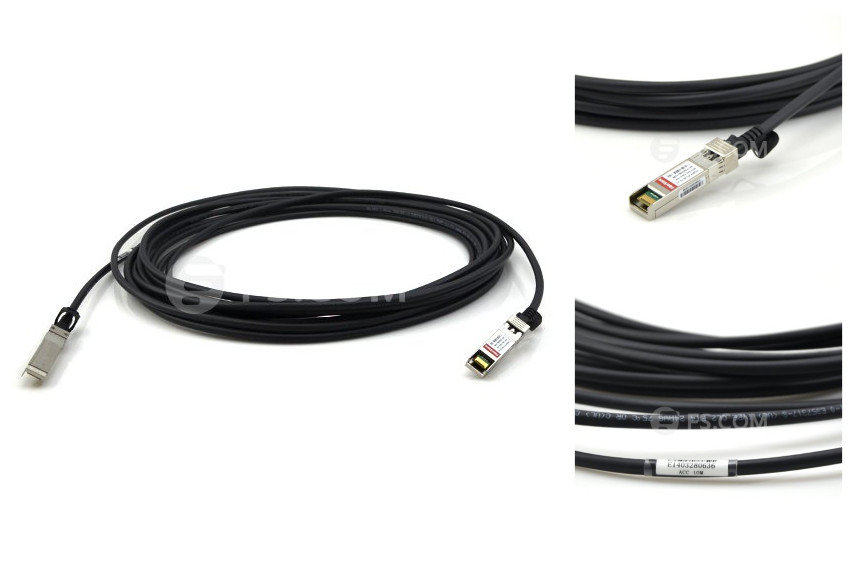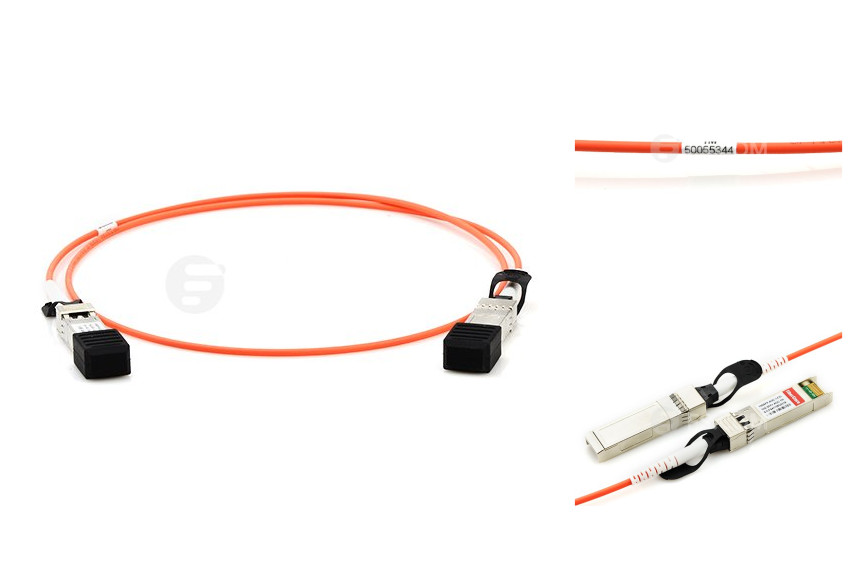April 20, 2016
Today, more bandwidth is needed to support the use of server virtualization, and the amount of data that needs to be transmitted to and from storage area networks (SANs) has also dramatically increased. To accommodate the fast growing number of operating systems and applications and data transmission between servers and switches, SFP+ direct attach cable (DAC), has been a preferable solution for it can provide a lower-power means for operation on short fiber optic links or short copper connections. How much do you know about SFP+ direct attach cable?
First, we need to know what SFP+ direct attach cable is. It is a fixed assembly that is purchased at a given length, with SFP+ connector modules permanently attached to each end of the cable. SFP+ direct attach cable uses an enhanced SFP+ connector to transmit and receive 10Gbps data through one paired transmitters and receivers over a thin twinax cable or a fiber optic cable. It provides high performance in 10 Gigabit Ethernet network applications. 10G SFP+ direct attach cable is designed to use the same port as an optical transceiver, but compared with optical transceivers, the connector modules attached to the cable leave out the expensive optical lasers and other electronic components, thus achieving significant cost savings and power savings in short reach applications.
SFP+ direct attach cable is a low cost, low power consumption and low latency solution that is ideal for high-density, in-rack 10Gbps connections between servers and switches. It provides better cable management for high-density deployments and enhanced electrical characteristics for the most reliable signal transmission. Here are several outstanding advantages of SFP+ direct attach cables.
- MSA compliant—fully conform to the SFP+ MSA specifications
- High speed—support 10 Gbps data rates with backwards compatibility to 1 Gbps
- Reliability—RoHS compliant with excellent EMI performance and high reliability
- Scalability and flexibility—provide enhanced scalability and flexibility, and higher density for today's data centers and storage area networks
- Space saving—offer the smallest 10 gigabit form factor and a small overall cable diameter for higher density and optimized rack space in 10G Ethernet uplinks and Fibre Channel
- Cost saving—cost up to three times less than fiber optic solutions, while offering lower latency and consuming up to 50% less power per port than current copper twisted-pair cabling systems
Generally speaking, SFP+ direct attach cable can be divided into SFP+ direct attach copper cables and SFP+ active optical cables (AOCs). This part will discuss these two kinds of SFP+ direct attach cables.
There are two types of SFP+ direct attach copper cables, SFP+ active copper cable (ACC) and SFP+ passive copper cable (PCC). SFP+ passive copper cable (PCC), or passive SFP+ DAC, is fully compliant to the SFF-8431 SFP+ MSA. It has no signal amplification in the cable assembly. When it is utilized, electronic dispersion compensation (EDC) is typically used on the host board designs. EDC allows for an extended length of passive cable assemblies. They deliver high-speed connectivity between active equipment with SFP+ ports. The copper cable trunks are made to order, reducing installation time and maximizing flexibility. The low power consumption assists in making the passive copper cable assembly an economic solution for within rack or rack to rack applications. SFP+ active copper cable (ACC) has signal amplification and equalization in the cable assembly. SFP+ ACC assemblies are typically used in host systems that do not employ EDC. They also incorporate Rx LOS and Tx Disable features. As with passive cables, the industry standard EEPROM signature enables the host system to differentiate between an active copper cable and a fiber optic transceiver. The picture below shows an HP JG081C compatible 10G SFP+ passive direct attach copper cable.

SFP+ active optical cable is composed of SFP+ optical transceivers in both ends and fiber optic cable in between. This integrated optical module solution removes the complicated optical fiber interface and brings friendly electrical-to-electrical interface to users. SFP+ AOC accepts the same electrical inputs as a traditional copper cable. It uses optical fiber and electrical-optical conversion on the cable ends to improve speed and data transmission distance of the cable while not sacrificing compatibility with standard electrical interfaces. SFP+ AOC is designed to meet the requirements of high speed, high density and low power consumption for applications in today’s data centers via optical fiber wire. It has been a preferable interconnect solution for SFP+ applications. SFP+ AOC is compliant to industrial standard SFP MSA and provides high performance SFP+ interfaces, supporting 10Gb/s bi-directional operation. The image below shows a Cisco SFP-10G-AOC10M compatible 10G SFP+ active optical cable.

SFP+ direct attach cable can provide you with a cost-effective and low power consumption solution for your high-density 10 Gigabit applications. It has a lot of advantages. These three kinds of 10G SFP+ direct attach cable assemblies, 10G SFP+ passive copper cable (PCC), 10G SFP+ active copper cable (ACC), and 10G SFP+ active optical cable (AOC) are of their special applications. SFP+ direct attach cable now has been a very popular choice in the market.
Posted by: jowang at
07:26 AM
| No Comments
| Add Comment
Post contains 856 words, total size 7 kb.
35 queries taking 0.0169 seconds, 70 records returned.
Powered by Minx 1.1.6c-pink.









